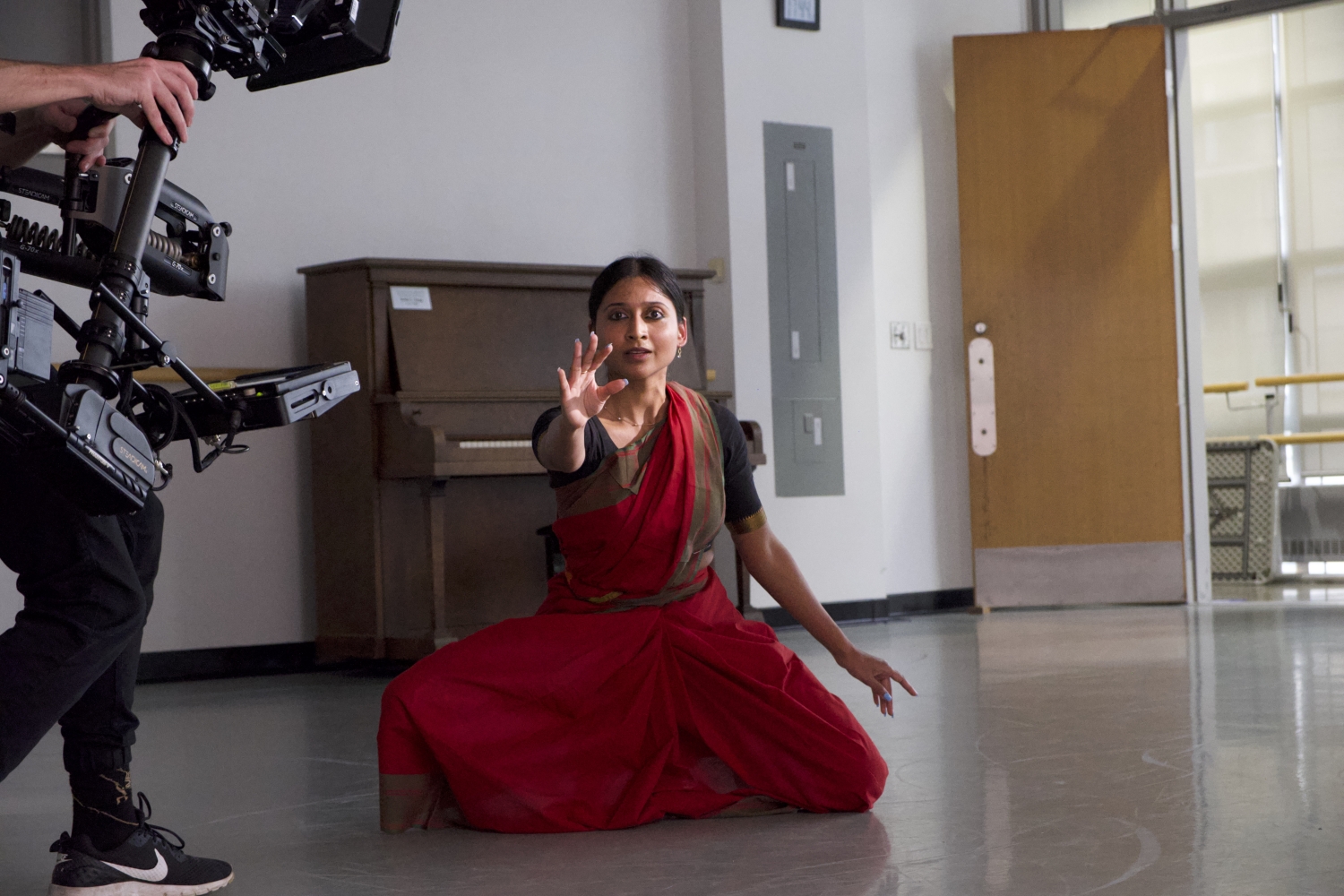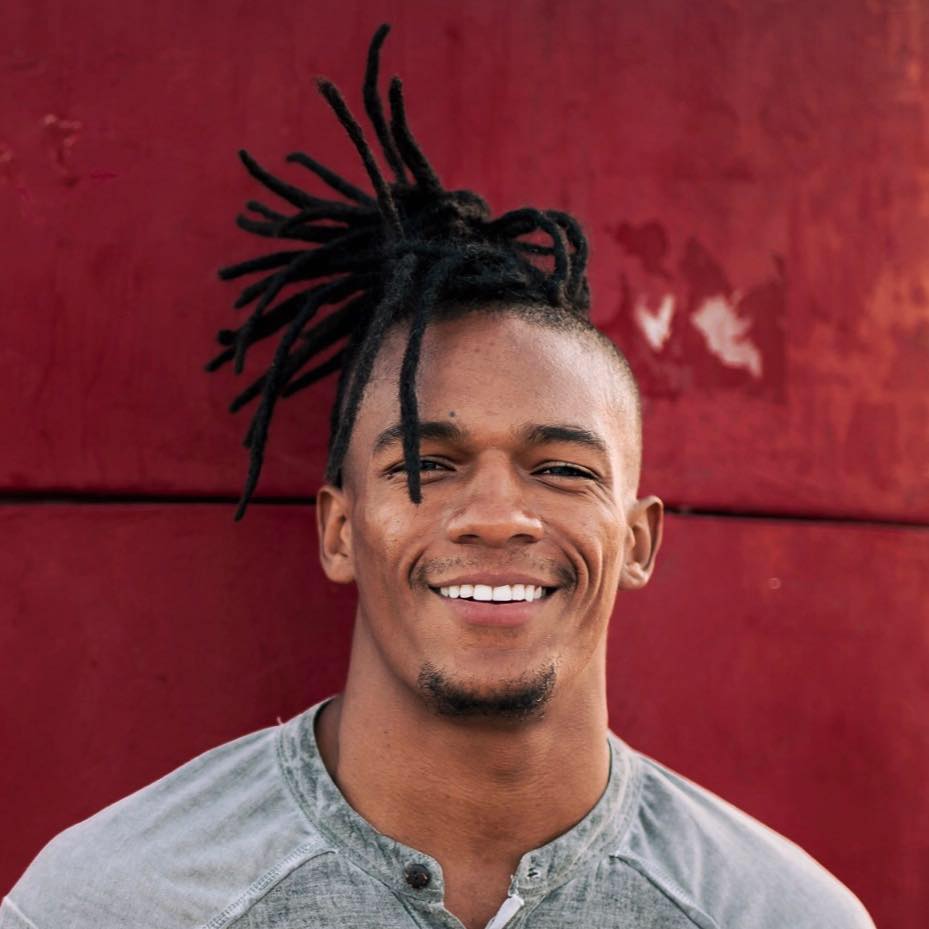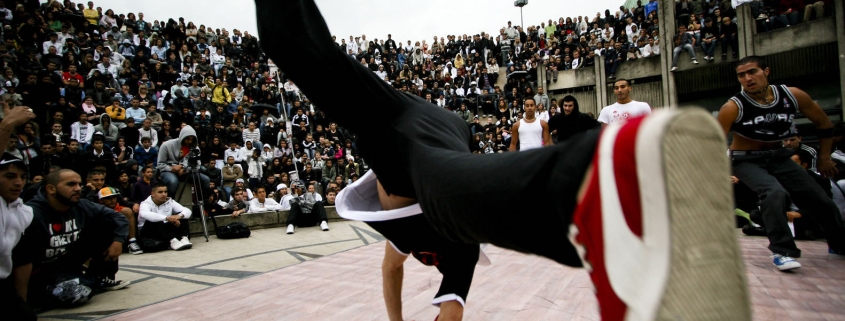The BC Creates team had the chance to interview Kevin Fitzgerald about his ongoing The Art of Dance project. Kevin, a Netflix Diversity of Voices fellow and HBO Maverick, is an award-winning Haitian-Canadian artist with Arawak-Kanak heritage, African Tuareg-Bantu roots, and Irish-French Polynesian ancestry. He is celebrated for his cult classic documentary, FREESTYLE: THE ART OF RHYME, released theatrically and on the Criterion Channel. Additionally, as a musician, he’s played alongside notable acts like Ozomatli, Black Eyed Peas, and Ben Harper. He’s also the founder of The Hip Hop Film Festival, one of the principal founders of Hip Hop Films and a member of Forward Doc, advocating for filmmakers with disabilities.
As part of the neurodiverse and disabled communities, Kevin personally understands the ability of dance to transcend barriers and showcases this throughout the series. Discover our interview with Kevin below and learn more about The Art of Dance at the artdancedoc.com.
What motivated you to initiate The Art of Dance series, and how has the journey evolved for you since its inception?
I grew up as a DJ in the golden era of hip hop in the 80’s and 90’s. My family is from the West Indies with Indigenous and African roots, I played in bands such as Antibalis and Ozomatli, and Jurassic-5 growing up in New York and LA. And always remember as a DJ wanting to make people dance and hopefully watch them dance. I also wanted to know the story behind what I saw on the dance floor, the history, the culture of the music and dance.
After making my film Freestyle, at USC film school (John Singleton was my mentor in the Black Student Union), and moving to Vancouver, I started developing and shooting The Art of Dance project informally as way to connect to my roots and also document the evolution and the viral popularity of dance on social media, asking myself and others the question: “what moves you?” and the answer always seemed to be “connection” whether it be to self, others, music, culture, family, community, and so on.
Dance is a medium with endless possibilities. Could you elaborate on your creative process when conceptualizing each edition of the series? How do you approach selecting themes and lead characters to follow?
I feel it all starts in our mother’s womb. The pulse of blood flow, from the heartbeat, imprints on us a rhythm that is so strong and deep. It is the most basic fundamental source of dance and movement for us all.
Our African and Indigenous roots is also inspiration. This is the foundation from which we move and remember how to. It’s so basic and fundamental that people don’t even think about it consciously, but it’s the source.
And then you can say further that is God or the Creator that is moving us – life, spirit, it’s so mystical, but to know what source is, and be in touch with it, is where the magic happens.
When a dancer is connected to her source, and can move from that place, you can see it, and you can feel it. And that is when harmony and light shine and the dance is free and full and good and in harmony with the space. So that is when you know you are in the process of literally presence and something special. The camera sees it. And the crew and steady cam operator lock into focus on that dancer.
I, and all of the filmmakers and collaborators I have worked with on this project, have been brought to tears witnessing these special moments that we had the opportunity to capture on film.

Collaboration often plays a crucial role in such expansive projects. How did you go about selecting collaborators, from traditional dance practitioners to contemporary street dancers, and ensuring a harmonious blend of styles and perspectives?
I did not make this project alone. This is a project that has been shot by a collective of filmmakers around the world over many years. I can’t take credit for everything. With their talented and generous contributions to the project, it would be nothing. The dancers and my producers, and cinematographers and other directors and all our editors, it’s been an amazing collaborative journey of so many people, friends and colleagues.
We have been making this project as a living blended document of sorts, using extensive archival, found, and crowd-sourced footage. In a hip hop filmmaking style, we use film the way a hip hop producer would use samples to dig in the crates also. Combining it with footage we shot and others shot and mixing and mashing it up in new creative ways to tell the most intimate visually stunning stories we can on an epic scale.
Dance has the power to evoke emotions and connect with audiences on a deep level. What do you hope the audience takes away from each performance?
Love. I want people to fall in love with what they see on the screen. It’s a cinematic experience, we are trying to do the hip hop version of Baraka and Latcho Drom. Those are like my two favourite films of all time. They are visual films with little to no talking, like cinematic poems almost. That is what we are trying to do. Make people dance and connect.
Since people are so alone and lonely and socially isolated. They watch our film and they see poetic movement and it resonates with them internally and makes them want to get up and go outside of there house and dance in the streets or in the clubs or take a dance class and just move. That is the goal and the life I want for the viewers and audience.
The Art of Dance seems to be a celebration of the diversity within the dance world. How do you ensure that each edition of the series embraces inclusivity and represents a wide range of dance styles and cultural influences?
It’s a feature and a series. I am multicultural and intersectional, Black, Indigenous, French, American, Canadian, Irish, Polynesian, Jewish… I am trying to tell the story of all these cultures and more. The evolution and history of humans through dance. We have family and friends all over the world. We listen and respect our elders and traditions and follow protocols.

How has your connection to B.C. inspired The Art of Dance?
My children were born here and I have lived in B.C. for almost 15 years now. I love this place. It’s not perfect. But it’s home. And I love walking down Commercial Drive in East Van near my house and talking to all my friends and community neighbours. My son goes to VanTech and all his friends are so diverse: Asian, Black, Indigenous, and so on. Everyone is cool with each other. I love that. I feel a strong sense of connection here to nature and the air and land and water and mountains. We live in a very special place in B.C. We are lucky. I celebrate that and the creative spirit and sense of community and belonging. it’s a great place to shoot with great locations.
Looking ahead, what are your aspirations for the future of The Art of Dance? Are there specific goals or new directions you hope to explore in upcoming editions?
We going to have a theatrical release of the film and are gearing up to develop the series now. As a collective of filmmakers from underrepresented, marginalized, and equity-seeking communities, we are still a work in progress at the moment and in post-production as well as still shooting some pick-up shots. The editing journey has been a challenge, working with so much footage: over 700 hours shot over seven years.
However, we work closely with our partners to make sure people see the work in the best possible way. As a “living cinematic experience.” A number of film festivals have already reached out to us about premiering the film version, cinemas about booking it, and broadcasters and streamers. We are still open to partnerships and contributions for those looking to support the project. The possibilities look very good and I can’t wait to share The Art of Dance with the world.



